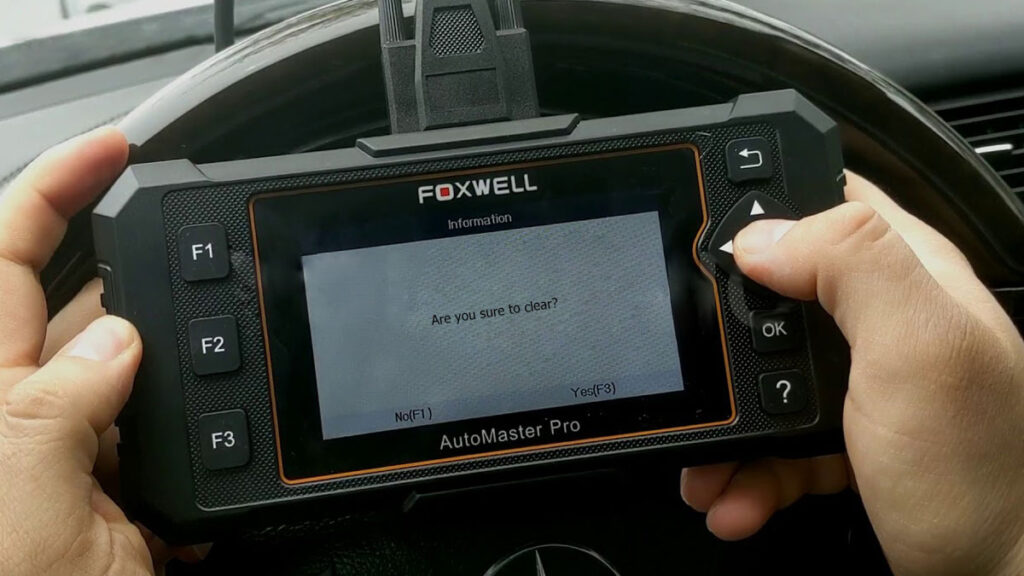If you’re looking for the best automotive scan tool, look no further! In this blog post, we will discuss the 11 best tools on the market right now. So you can find the perfect one for your needs. Whether you’re a professional mechanic or just someone who likes to do your own repairs, these tools will help you get the job done quickly and easily.
What is Automotive Scan Tool?
Before we dive into the different types of scan tools, let’s discuss what a scan tool is. In short, an automotive scan tool is used to diagnose and repair cars electronically. It can detect problems with various components of your vehicle including the engine, fuel system, transmission, brakes, and more. With a good scan tool, you’ll be able to identify the cause of the problem and fix it quickly.
Types of Automotive Scan Tools
There are three main types of automotive scan tools: OBD-II generic, OBD-II enhanced, and factory scan tools.
OBD-II generic:
OBD-II generic scan tools are the most basic type of scan tool. They are designed to read and clear diagnostic trouble codes (DTCs) and provide live data from the vehicle’s onboard diagnostic (OBD) system. These tools are often inexpensive and are suitable for basic diagnostic tasks such as reading and clearing DTCs and performing basic emission tests.
OBD-II enhanced:
OBD-II enhanced scan tools offer additional functionality beyond what is available with generic scan tools. They can access more advanced diagnostic information, including freeze frame data, system readiness monitors, and bi-directional controls. These tools are more expensive than generic scan tools and are often used by professional mechanics and technicians.
Factory scan tools:
Factory scan tools, also known as dealer-level scan tools, are the most advanced type of automotive scan tool. These tools are specifically designed for use on a particular make and model of the vehicle and offer the most comprehensive diagnostic and repair information available. They are typically only used by dealerships and professional repair shops and are the most expensive type of scan tool.
How does Automotive Scan Tool work?
The automotive scan tool is a device that is used to diagnose and troubleshoot problems with a vehicle’s electronic systems. It works by connecting to the vehicle’s diagnostic port, which is typically located under the dashboard. The scan tool is then able to access data from the vehicle’s computer systems, including engine performance, transmission, and emission control systems.
The scan tool is able to read and interpret this data and display it on the device’s screen. It may also be able to transmit this data to a computer or other device for further analysis. Some scan tools also have the ability to clear diagnostic trouble codes (DTCs) and reset system monitors.
Some scan tools are designed for use by professional mechanics, while others are more user-friendly and intended for use by DIYers or car owners. The specific features and capabilities of a scan tool will vary depending on the make and model of the tool.
The top 11 best automotive scan tools on the market today
- Autel MaxiCOM MK808 OBD2 Scanner
- LAUNCH CRP129E OBD2 Scanner
- Action CP9690 Elite OBD2 AutoScanner Plus
- Autel ML629 OBD2 Scanner
- BlueDriver Bluetooth OBDII Scan Tool
- OBDeleven Pro Diagnostic Scan Tool
- ANCEL FX2000 Vehicle OBD2 Scanner
- Autel AutoLink AL319 OBD2 Scanner
- Autel MaxiCOM MK908 Bi-Directional Diagnostic Scan Tool
- Launch X431 V+ Bi-Directional Scanner
- Autel MaxiPRO MP808K Professional Diagnostic Scan Tool
Best Automotive Scan Tools for Home Use
If you’re looking for an automotive scan tool to use at home, here are some of the best options:
1. Autel MaxiCOM MK808 OBD2 Scanner

If you’re looking for a reliable and easy-to-use scan tool for home use, the Autel MaxiCOM MK808 is an excellent choice. This scanner can read and clear engine codes, reset maintenance lights, perform bi-directional testing, and more. It supports 85 different makes and models, allowing you to work on a wide range of vehicles. The scanner also features 25+ maintenance functions, such as ABS bleeding, battery registration, and oil resetting. It even provides detailed reports to help you diagnose problems quickly.
The initial cost of the Autel MaxiCOM MK808 may be higher than other scan tools; however, it is worth the investment due to its comprehensive set of features, easy-to-use interface, and reliable performance. With the Autel MaxiCOM MK808, you’ll be able to quickly identify and troubleshoot problems on your car or truck. This powerful scan tool is an essential part of any DIYer’s diagnostic arsenal.
2. LAUNCH CRP129E OBD2 Scanner

The Launch CRP129E is an affordable version of Autel’s scan tool. It offers many of the same features, though it works with fewer car brands and vehicle types – 57 car brands and over 10,000 different vehicle types. This scanner also offers live data tracking for up to 10 streams simultaneously and has multiple maintenance features, such as oil reset, TPMS reset, battery voltage test, and steering angle calibration tools. Additionally, it supports nine languages and provides free lifetime updates. What really stands out about this scan tool is the comprehensive 5-year warranty that comes with it – so you won’t have to worry about spending any more money on keeping your scanner up-to-date. With this scanner, you can read engine, TCM, PCM, ABS codes, and much more!
3. Action CP9690 Elite OBD2 AutoScanner Plus

This Actron CP9690 scan tool is perfect for anyone looking to diagnose vehicle issues of all types and ages. Not only does it read OBD1 codes from GM, Ford, Chrysler, and Toyotas, but also covers all OBD2 vehicles – making it compatible with over 57 car brands and 10,000 different models. This sleek and simple tool can also display live data from over 300 different sensors and inputs throughout your vehicle, as well as freeze frame data so you have the time to properly troubleshoot. Get all of these features without breaking the bank – this scan tool is an excellent value. Whether you’re working on older or newer vehicles, the Actron CP9690 can handle it all. With its easy-to-use interface and comprehensive coverage, it’s the perfect scan tool for DIYers and professionals alike.
4. Autel ML629 OBD2 Scanner
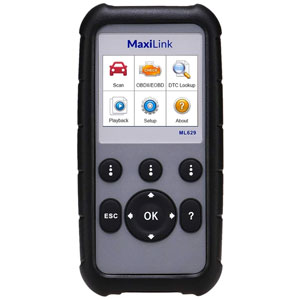
The Autel ML629 scanner is a cost-effective solution for those looking to diagnose various car problems. It’s an easy-to-use OBD2 vehicle scanner that can read codes and pull data in just a few seconds. Additionally, it also offers some limited streaming abilities from certain input options. Plus, one of the best features of this scanner is that it provides free updates for life, so you don’t have to worry about your device becoming outdated.
And, in case anything should happen to the scan tool while you’re using it, it comes with a 1-year warranty to give you some extra peace of mind. All in all, the Autel ML629 scanner is a great choice for anyone looking to diagnose car issues without breaking the bank. It is an incredibly cost-effective option with plenty of features to help you get the job done quickly and efficiently.
5. BlueDriver Bluetooth OBDII Scan Tool

The BlueDriver OBD2 Scanner is the perfect tool for anyone wanting to diagnose and fix their vehicles quickly and efficiently. Not only does this comprehensive scan tool provide engine codes, but it also connects you to an extensive database that automatically generates repair reports, helping you identify and take care of any issues. Plus, if you pair it with their mobile app, you get access to a powerful vehicle diagnostic tool that works great with Apple and Android smartphones and tablets.
What’s more, the BlueDriver offers features like free app updates, the ability to screenshot and save data quickly, as well as interaction with live data graphs for an in-depth look into any problems. On top of that, it’s significantly cheaper than many other models out there – making it an ideal choice for those on a budget. So if you’re looking for a reliable and affordable way to diagnose and fix vehicles, the BlueDriver OBD2 Scanner is definitely worth considering!
6. OBDeleven Pro Diagnostic Scan Tool
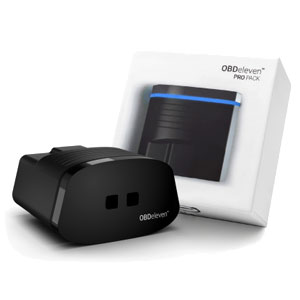
The OBDeleven Pro is an excellent choice for any VAG (Volkswagen Auto Group) vehicle owner, such as those with Audis or VWs. This user-friendly scan tool utilizes Bluetooth to connect to Android devices and provide users with a comprehensive list of functions. It is capable of accessing diagnostic trouble codes (DTCs) and performing a variety of diagnostic tests, making it a great option for those who are technically inclined and want to validate repairs or relearn certain automated vehicle functions.
Additionally, the OBDeleven Pro provides access to dealer-specific menus, allowing users to customize their vehicle’s default settings (which is not possible with other scan tools). Those with iPhones or other Apple products are unfortunately not able to access all the features of this tool, but they can purchase a cheap Android tablet as an alternative. OBDeleven also offers a standard edition of their scan tool which is less feature-rich but comes at a lower cost. Either way, the OBDeleven Pro makes for an ideal scan tool for VAG vehicle owners.
7. ANCEL FX2000 Vehicle OBD2 Scanner
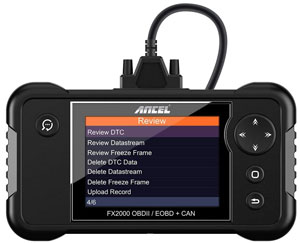
The Ancel FX2000 Scan Tool is an excellent choice for any post-1996 US-made vehicle. It provides a wealth of features and functions that are comparable to more expensive scan tool models at a fraction of the cost. This scan tool can read engine, ABS, SRS, and PCM codes and live streams data from each of these systems, making it easier to troubleshoot and diagnose the problem. It can also be used to run emission tests in order to pass smog or other environmental tests, ensuring your vehicle meets all necessary requirements.
Additionally, free lifetime updates are included with the purchase of this scan tool so that you won’t find yourself paying extra as technology evolves. While the Ancel FX2000 Scan Tool does not support vehicles produced after 2002 from the EU and 2005 from Asian countries, it will still read basic engine codes for any vehicle with an OBD2 system. However, you won’t be able to use advanced features like live data streaming. All things considered, this scan tool is an excellent value for money and perfect for keeping your vehicle running smoothly.
8. Autel AutoLink AL319 OBD2 Scanner

The Autel AL319 OBD2 scanner is a great choice if you’re looking for an affordable scan tool that can read your engine codes and freeze frame limited data. It’s significantly cheaper than the top-of-the-line Autel scanners, but also has fewer features. This device can only read check engine codes and won’t provide any troubleshooting advice beyond the code name and description. Despite this, it might be a great choice for competent mechanics who are comfortable researching more complex issues on their own.
This scan tool is compatible with all vehicles manufactured in the United States after 1996, and European models made after 2000 which have an OBD2 system. It also comes with a 1-year warranty, although most simple scan tools like this tend to last much longer than that. With its competitive price point and reliable performance, the Autel AL319 is an excellent choice for anyone looking for an affordable OBD2 scanner.
Best Professional Car Diagnostic Tools
If you are working in the automotive industry or are more technically inclined, you may require a more advanced scan tool than what is listed above. Professional-grade scan tools offer significantly more features and capabilities, making them well worth the additional cost for those who need them. Here are some of the best scan tools:
1. Autel MaxiCOM MK908 Bi-Directional Diagnostic Scan Tool
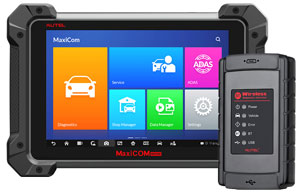
The Autel MaxiCOM MK908 is the ultimate scan tool for any professional mechanic. This bi-directional diagnostic tool can read and diagnose codes for over 80 different vehicle models, including BCM, PDM, EPS, and all other modules. With the Autel MK908 you can also perform ABS bleeding, pump testing, engine oil resets, and a host of other maintenance functions. In addition to its comprehensive diagnostic capabilities, this scan tool provides live-streaming data from various sensors and allows for freeze-frame capture of the data for easier troubleshooting.
The Autel MaxiCOM MK908 is also equipped with a wireless connection, allowing you to diagnose vehicles up to 755 feet away. While this scan tool can be an expensive initial outlay, it is worth every penny as it provides professional-level diagnostic and maintenance capabilities. As with all Autel scan tools, the MaxiCOM MK908 comes with a 1-year warranty, however, you will need to purchase yearly updates in order to keep up with the latest vehicles. With this powerful scan tool, your diagnostic and maintenance needs are sure to be taken care of.
2. Launch X431 V+ Bi-Directional Scanner
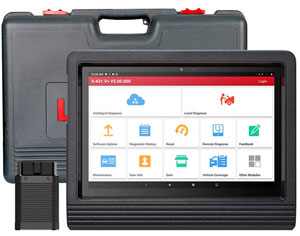
The Launch X431 V+ is a professional-grade OBD2 diagnostic scanner that comes with everything you need to accurately troubleshoot and repair any code your vehicle throws at you. This advanced scan tool has the added feature of being available in over 24 languages, making it ideal for use around the world. Not only does it come with active testing capabilities, but also with bi-directional data that allows you to do ABS bleeding, gear resets, and injector coding with ease.
Compared to DIY options, this scan tool is more expensive but provides the same level of performance as an $8,000 Snap-On scan tool at a fraction of the cost. It works with over 10,000 different vehicles and comes with a comprehensive five-year warranty, providing you with peace of mind that your purchase is secure. With this scan tool, you can be sure to have an accurate diagnosis for any problem your vehicle throws at you.
3. Autel MaxiPRO MP808K Professional Diagnostic Scan Tool

The Autel MP808K is a great professional-level scan tool option that has all the features you need to troubleshoot and diagnose any code your vehicle throws at you. It works with over 80 different makes and models of vehicles and comes packed with features, like key programming, ABS bleeding, and more. Plus, it’s one of the most affordable scanners of its caliber on the market today.
However, keep in mind that this scanner does require a paid subscription to access the latest updates and vehicles. The good news is that it comes with a 1-year warranty, so you can rest assured knowing you won’t get a dud when you purchase it. For the money, the Autel MP808K is hard to beat. Whether you’re a professional shop or a home mechanic, this scanner provides excellent value for the price.
How to use an automotive scan tool to diagnose problems with your car
Connect the device:
Using an automotive scan tool is fairly straightforward. The first step is to connect the device to your car’s OBD2 port, which is usually located near the steering wheel. Once connected, you’ll need to turn the ignition key in your car to the “on” position. This will allow the scan tool to access data from all of your car’s sensors.
Type of diagnostic:
Next, you’ll need to select the type of diagnostic test you want to run. Depending on the specific device and make/model of your vehicle, you may have several options available. After selecting the desired test, follow any on-screen prompts and enter whatever information is requested.
Interpret the results:
Finally, you’ll need to interpret the results of your diagnostic scan. It is done by comparing the values from each sensor with what’s listed in your car’s service manual or by using a code reader app. If any of the values appear to be incorrect or out of range, then you’ll have found the source of your car’s problem and can begin troubleshooting it.
Remember that using an automotive scan tool is only one step in diagnosing and repairing your vehicle. While it can provide invaluable information about what might be wrong with your car, it’s always best to consult a professional if you’re unsure of what to do next. With their help, you can ensure that your car is running safely and efficiently.
The benefits of using an automotive scan tool.
Using an automotive scan tool can have a number of benefits, including:
Quickly diagnosing problems:
With an automotive scan tool, you can quickly diagnose and troubleshoot any issues that your car may be experiencing. This can save you time and money, as well as prevent further damage to your vehicle.
Accessing comprehensive data:
Automotive scan tools provide access to comprehensive data that would otherwise be unavailable. This includes real-time sensor readings, diagnostic codes, and information about the status of various components in your car.
Saving money on repairs:
Using an automotive scan tool can save you money by allowing you to diagnose and troubleshoot problems yourself instead of paying for a mechanic’s services. This can be especially beneficial if the issue is minor and easily fixable.
Making informed decisions:
Having access to detailed data from your car’s sensors can help you make more informed decisions about any repairs or modifications you may need to do. This can help ensure that your car is running at its optimal performance level and can even extend the life of your vehicle.
As you can see, using an automotive scan tool can be a great way to diagnose problems with your car quickly and accurately.
Tips for maintaining your automotive scan tool
Using an automotive scan tool can be a great way to diagnose and troubleshoot problems with your car, but it’s important to make sure that you keep it properly maintained. Here are some tips for maintaining your device:
Regularly update the software:
To ensure that your scan tool is working correctly and providing accurate information, you should make sure that it’s always running the latest software version. This can often be done via a USB connection or by downloading updates from the manufacturer’s website.
Keep it clean:
Over time, dust and other debris can accumulate in the device’s ports and connectors, so you should regularly give it a good cleaning to ensure optimal performance.
Avoid exposure to extreme temperatures:
Excessive heat and cold can damage your scan tool, so make sure that you store it in a cool, dry place. Additionally, avoid leaving it in direct sunlight for extended periods of time.
By following these tips, you can ensure that your automotive scan tool is always in good working condition and ready to help you diagnose and troubleshoot any issues with your car.
The top 5 mistakes people make when using an automotive scan tool
While an automotive scan tool can be a great way to diagnose and troubleshoot problems with your car, it’s important to use it properly. Here are the top five mistakes people make when using one:
Not reading the instructions:
Before you start using your scan tool, make sure that you thoroughly read the instructions and familiarise yourself with the device’s features.
Using outdated software:
You should always make sure that your scan tool is running the latest software version to ensure accurate results.
Ignoring warning messages:
If a warning message appears on your scan tool, take it seriously and investigate further. Ignoring these warnings can lead to further damage or potentially dangerous situations.
Using the wrong tool for the job:
Different scan tools are designed to do different tasks, so make sure you’re using the right one for the job.
Not taking notes or screenshots:
It’s important to document all of your findings when using a scan tool, as this will help you in case of any future problems. Taking screenshots and notes can also be useful if you need to refer back to something later.
By avoiding these mistakes, you can ensure that your scan tool is used properly and safely.
Buying guide of Automotive Scan Tools.
When selecting an automotive scan tool, there are several factors to consider. Here is a buying guide to help you find the best one for your needs:
Type of Task:
Think about what tasks you need to complete with your scan tool and make sure that the one you choose is capable of doing them.
Type of vehicle:
Different models of vehicles require different types of scan tools, so be sure to select one that is compatible with your car.
Features:
There are many different features available on scan tools, from basic ones such as error code readings to more advanced functions like programming and calibration. Think about which ones you need before making your purchase.
Budget:
Scan tools can vary greatly in price, so decide how much you are willing to spend before looking at the available options.
Is it upgradeable?
Another important factor to consider is whether the scan tool you’re looking at is upgradeable. This can allow you to add new features or keep up with changes in vehicle technology.
By keeping these tips in mind, you can ensure that your automotive scan tool meets all of your needs and keeps up with any future technological developments.
Understanding Automotive DTCs (Diagnostic Trouble Codes) with Scan Tools
Diagnostic trouble codes (DTCs) are codes stored in a vehicle’s onboard diagnostic (OBD) system that indicate a fault or problem with the vehicle. These codes can be accessed and read using an automotive scan tool, which is a device that connects to the OBD system and allows the user to retrieve diagnostic information.
DTCs are used to help diagnose and troubleshoot issues with a vehicle. When a fault occurs, the OBD system will store a DTC in its memory and turn on the “check engine” light on the dashboard. The DTC will remain in the OBD system’s memory until it is cleared using a scan tool or other diagnostic device.
To use a scan tool to its full potential, here are some tips that will help you understand DTCs:
Learn the basics:
First, make sure you have a good understanding of how your vehicle’s systems work and what each DTC stands for. This includes knowing the individual components and systems, as well as the overall functioning of your vehicle.
Know the symptoms:
Be aware of any symptoms that may be related to the DTC that is being scanned. This can help you narrow down possible causes and make diagnosing easier.
Check for multiple codes:
Don’t just look at one code—check to see if there are any other related codes that may help you diagnose the issue more accurately.
Check for technical service bulletins:
Manufacturers often provide technical service bulletins (TSBs) containing updated information about certain DTCs and possible solutions. Check to see if there are any TSBs related to your vehicle’s codes.
By understanding how to interpret DTCs with a scan tool, you can quickly diagnose and troubleshoot any problems with your car. With the right knowledge and tools, you can save time and money on repairs.
Summary
Automotive scan tools are an invaluable asset to any vehicle owner and mechanic. Whether you have a newer model car or an older one, it’s worth investing in a scan tool for the increased diagnostic capabilities and improved safety of your vehicle.
Scanning tools can provide detailed information about your car, help diagnose problems more quickly and accurately, and even enable you to keep up with any future changes in vehicle technology. With the right scan tool, you can ensure that your car is running safely and efficiently for many years to come. Investing in an automotive scan tool can be a great way to save time and money, as well as keep your vehicle running in the best shape possible. I hope this guide has helped understand the importance of scan tools and how they can help keep your car running smoothly.
FAQs
A scan tool is a diagnostic device used by car mechanics and technicians to diagnose, troubleshoot and repair vehicle systems. It can be used to read and diagnose sensor data, activate components, retrieve engine codes and reset the check engine light. Scan tools also provide access to emissions systems, transmission settings, ABS braking systems, and airbag module endorsers can also benefit from being more mindful in their work.
An OBD2 scanner is a scan tool that is designed to read data from your vehicle’s On-Board Diagnostic (OBD) system. This type of scan tool can be used to diagnose and troubleshoot a variety of vehicle problems, from engine misfires and emissions issues to transmission and ABS braking system problems.
The main difference between OBD and OBD2 is the protocols they use. OBD, or On-Board Diagnostics, utilizes J1850 and ISO 9141 protocols, while OBD2 utilizes CAN (Controller Area Network) protocol. OBD also has fewer features and is found in older vehicles, while OBD2 is a newer and more advanced protocol that is found in all vehicles built since 1996. OBD2 scanners can provide more detailed information than OBD scanners and are better equipped to diagnose more complex systems.
OBD sensors are not always necessary, but they can be beneficial in diagnosing problems with your car. OBD sensors provide information about the operation of your vehicle’s systems and can help pinpoint potential issues.
No, OBD2 scanners are designed to be safe and not cause any damage to your car. Besides maybe breaking a few pins in the OBD2 port, code readers aren’t able to harm major vehicle systems. It is always recommended to follow the instructions provided with your scanner and to be careful when handling the device.
Most of the OBD2 scanners are designed to perform the same basic functions, however, there are some models that may have additional features or higher capabilities. It is important to research and read reviews before investing in a scan tool to make sure it is the right one for your needs.
No, you don’t necessarily need a mechanic to use an OBD scanner. Most modern scanners are user-friendly and relatively easy to use. However, it is important to understand how to interpret the scan results correctly and take appropriate steps based on the readings. If you are unsure about what to do, it is always best to consult with a qualified mechanic before taking action.
The accuracy of OBD2 scanners depends largely on the quality of the scanner and its ability to diagnose complex systems. Generally speaking, most modern OBD2 scanners are quite accurate and can help you diagnose problems quickly and efficiently.
Bi-directional scanners are a type of OBD2 scanner that is capable of not only reading data from the vehicle but also has the ability to control, activate and adjust certain systems. These types of scanners are typically more expensive than basic OBD2 scanners but can be invaluable in diagnosing certain problems.
No, OBD2 scanners are only compatible with vehicles produced after 1996. If your car was made prior to this, you will need to use an OBD scanner that is compatible with older vehicles. It is important to make sure the scanner you are using is compatible with your car before attempting any type of diagnostics.
A code reader is an essential tool for diagnosing vehicle issues. It simplifies the process of scanning trouble codes and can quickly identify problems that may be causing the issues. With a scan tool, you can not only read and clear codes but also access advanced data readings, playback features, diagnostic procedures, and built-in testing equipment. All of these features make it much easier to pinpoint and resolve vehicle issues.
OBD, or On-Board Diagnostics, is a system that uses computer technology to monitor the performance of a car’s engine and emission-related controls. It is designed to detect any malfunctions in the system, ensuring that your car runs smoothly and efficiently. Mechanics will use OBD scanners and software to diagnose any issues with the car.
